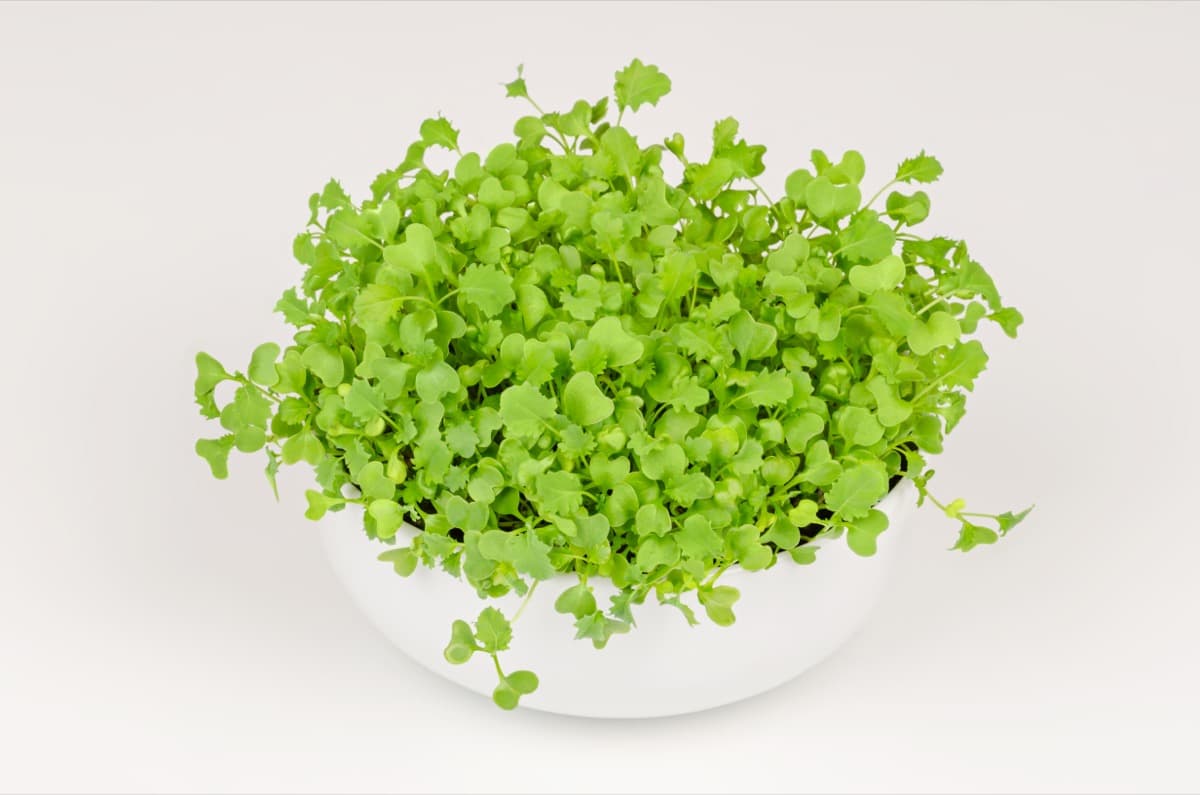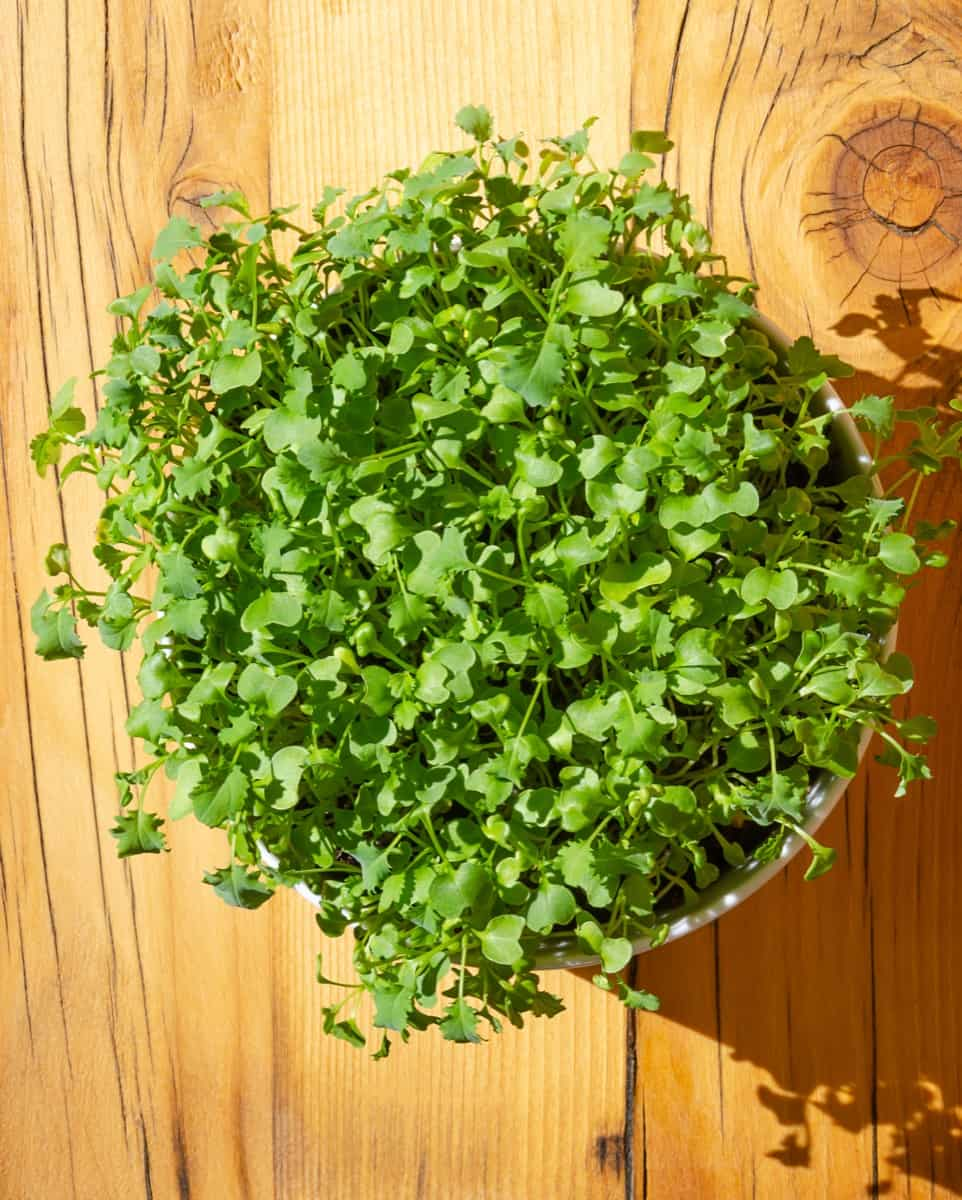Growing Kale microgreens is incredibly simple and can provide delicious, nutrient-dense greens in as little as a week or two. Microgreens are quickly becoming one of the most popular greens to grow. Not only are they full of flavor and nutrition, but they’re also incredibly easy to cultivate in your own home. Kale microgreens are a type of leafy green vegetable that is typically grown indoors.

A Step-by-Step Guide for Growing Kale Microgreens
Why Grow Kale Microgreens?
There are many reasons to grow Kale microgreens at home. For one, they are very easy to grow and don’t require much space or equipment. They also grow quickly – usually ready to harvest within 7 to 10 days of planting the seeds. As microgreens, the leaves are smaller than mature greens with curly or straight leaves.
It’s a fast-growing microgreen, and you can plant your seeds and be ready to harvest after just one week. You can enjoy eating both the leaves and stems of these wonderful greens. Kale Microgreens are the fastest and easiest to grow microgreens, making them a great choice for microgreen gardeners.
Benefits of Growing Kale Microgreens
- Kale is a nutrient-rich superfood that has numerous health benefits. When grown as microgreens, Kale packs an even bigger nutritional punch, providing more vitamins, minerals, and antioxidants than mature Kale plants.
- Microgreens are also easier to digest than their full-grown counterparts and are a great way to add extra nutrients to your diet.
- If you’re looking for a quick and easy way to get more Kale into your diet, try growing your Kale microgreens at home. It’s a simple process that only takes a few days from start to finish. Growing your greens is an economical way to get the freshest possible produce.
Supplies Required for Growing Kale Microgreens
- A container with drainage holes
- Potting soil or hydroponic growing medium
- Good quality seeds
- A good growing medium is a potting soil or a container filled with household compost. Alternatively, you can use a single-use grow mat specially designed for growing microgreens.
- Adequate light –sunlight or UV light, ideally 12-16 hours daily.
Steps to Grow Kale Microgreens
- Choose your container; any shallow container with drainage holes will work fine for growing Kale microgreens. If you’re using a plastic or ceramic container, drill some holes in the bottom before adding soil.
- Add some potting mix or compost to your container and wet it, so it’s damp but not soggy.
- Sprinkle your Kale seeds over the surface and lightly press them into the soil. You don’t need to cover them with anything since they don’t need darkness to germinate.
- Place your container in a warm, sunny spot and keep the soil moist by misting it with water every day or two. In 7-10 days, you should see little seedlings poking through the soil.
- Once your greens are about 2-3 inches tall, cut them just above the soil line with scissors or gardening shears.
In case you missed it: A Step-By-Step Guide for Growing Collard Microgreens: DIY in Simple Way from Seeds in Containers

Grow Kale Microgreens without Soil
- 2-3-inch-deep tray
- Kale seeds
- Water
- Place the tray on a sunny windowsill or under grow lights.
- Fill the tray with 1/4 inch of water and let it soak for a few minutes.
- Sprinkle the Kale seeds evenly over the surface of the water.
- Once the seeds have germinated and are about 1/2 inch tall, thin them out, so there is only one seedling per square inch.
- Keep the seedlings moist by misting them with water once or twice a day. Cut them just above the soil line when they are ready to harvest with sharp scissors.
Different Kale Varieties for Growing as Microgreens
Many different varieties of Kale can be grown as microgreens, but some of the main varieties include Curly Kale, Lacinato Kale (also known as dinosaur or Tuscan Kale), and Redbor Kale.
Tips for Growing Kale Microgreens
- If you plan to grow your microgreens, Kale microgreens are great for impatient beginners because they grow quickly and easily. Start with a soil mix and sterile containers.
- Kale microgreens are young plants that grow from seeds before developing into mature plants. They have smaller leaves than mature Kales, with large, flat, curly leaves and a strong central stem.
- Start with high-quality seeds. Please make sure they’re organic and non-GMO for the best results. Sow the seeds thinly and evenly, pressing them gently into the soil.
- Kale can be grown as microgreens in any number of container types, but we recommend using shallow, wide containers to give the roots plenty of room to spread. Kale microgreens need full sun and well-drained soil.
- Water your Kale microgreens regularly, but don’t overdo it. Keep the soil moist but not soggy.
- Choose a container that has good drainage. You don’t want your microgreens to sit in water, so make sure the container has holes in the bottom or is lined with a coffee filter.
- Use a sterile growing medium such as coco coir or vermiculite. This will help prevent mold and pests from ruining your crop.
- Feed your Kale microgreens weekly with a dilute solution of liquid fertilizer, such as fish emulsion or seaweed extract.
- Harvest your microgreens when they reach 2-3 inches tall, snipping them off at the base with sharp scissors.
How Long Does Kale Microgreens Take to Grow?
You can grow Kale microgreen seeds in home garden with some supplies like ideal soil, water, and light conditions. Kale seeds germinate successfully in a period of 3 to 4 days. The final harvest period is about 7 to 10 days. Thus, the process of growing Kale microgreens is easy.
Do Kale Microgreens Regrow After Harvesting?
Kale microgreens will not regrow after harvesting. Once you harvest Kale microgreens, compost the soil and roots and start a tray of microgreens.
In case you missed it: A Step-By-Step Guide for Growing Red Cabbage Microgreens: DIY in Simple Way from Seeds in Containers

Conclusion
Kale is a highly nutritious leafy green vegetable packed with vitamins, minerals, and antioxidants. Kale microgreens are simply young Kale plants that have been harvested before they reach maturity.
- Ultimate Guide to Ossabaw Island Hog: Breeding, Raising, Diet, and Care
- Ultimate Guide to Juliana Pig: Raising Facts, Size, Diet, Care, and Lifespan
- Raising Lleyn Sheep: Disadvantages, Price, Uses, Characteristics, and Care
- Ultimate Guide to Meishan Pig: Breed Facts, Breeding, Raising, and Care
- Ultimate Guide to Teacup Pigs: Raising, Diet, Lifespan, Cost, and Care
- Guide to Raising Poll Dorset Sheep: Facts, Profile, Characteristics, Uses, and Care
- Ultimate Guide to Bighorn Sheep: Characteristics, Diet, Lifespan, Breeding, and Lifecycle
- Ultimate Guide to Raising Katahdin Sheep: Farming Facts, Breed Profile, Uses, and Care
- Ultimate Guide to Raising Oreo Cows: Belted Galloways Farming Facts, Profile, Uses, and Care